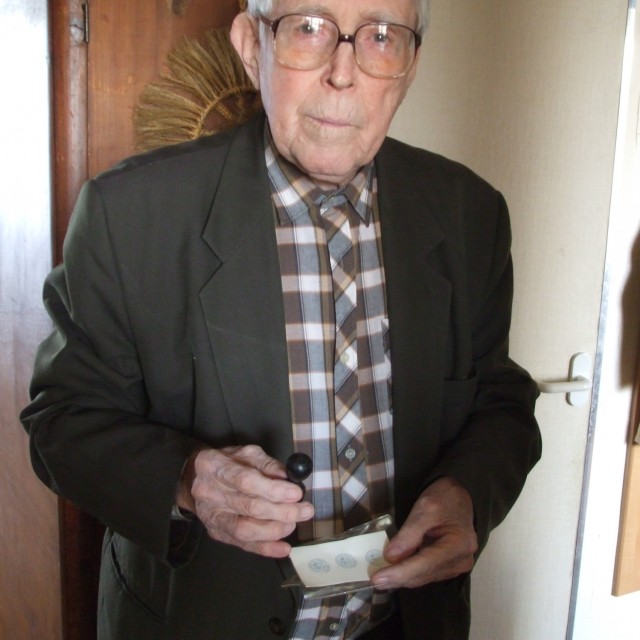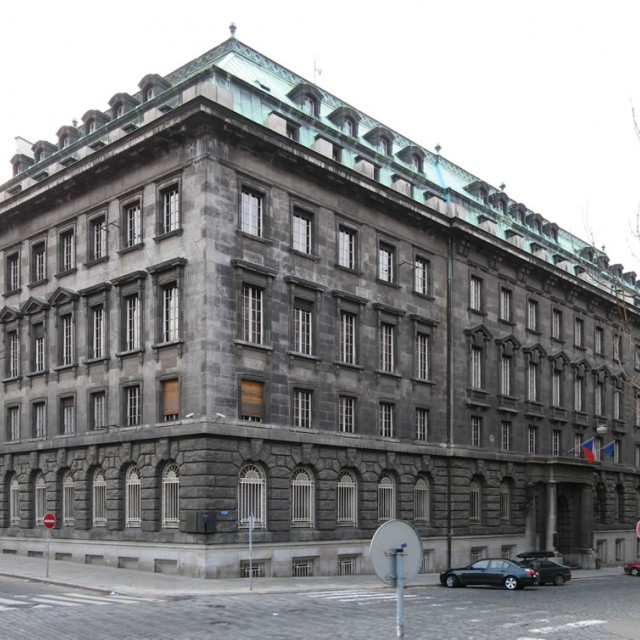The ill-fated rubber stamp
Pavel Macháček ended up in the infamous “Pečkárna,” (Petschek Palace), the Gestapo interrogation room, because of his Jewish classmate Jiří Synek, whom he was hiding during the war. The Gestapo came to get Pavel Macháček after Synek recklessly stole a police rubber stamp. Interrogations in the Petschek Palace and the prison in Karlovo square followed: “I had to lie on a table, the SS-mann had a stick about a meter long and he started to beat me with it. First when I was clothed, then on my naked backside. I counted one hundred and sixty nine beats, then I stopped counting, I had to concentrate so that I wouldn’t shout. Then they took me to a neighbouring room which had a bathroom. There was one more robust guy there, who got into a bathtub with an inch thick rope, a kind of a loop. The other one changed his stick for a bullwhip.” They did not manage to beat out a confession from Pavel Macháček regarding the theft of the rubber stamp.
Hodnocení
Abyste mohli hodnotit musíte se přihlásit!
Trasy
Příběh není součastí žádné trasy.
Komentáře

Pavel Macháček
Pavel Macháček was born in Prague on August 15th, 1921. He died at the end of 2008. His father was a school director at the First Republic times. His mother co-founded an organization for mother and child protection where she later worked as a secretary. She passed away when he was 9 years old. His father lived till 79 years of age, he died in 1953. During the war he was hiding his Jewish classmate Jiří Synek, (a world famous poet these days, his pen name is František Listopad), whom he provided with his own Protectorate documents. He was arrested by Gestapo for an alleged theft of an official stamp in 1943. The truth was, though, that the stamp was stolen from the Gestapo office just by his friend Jiří Synek. Synek stole the stamp in a watchless moment right after the Gestapo copied the initials from the borrowed documents. Synek wanted to help home anti-Nazi resistance movement with the stamp. Macháček was tortured in the investigation jail in Karlovo Square in Prague in order to tell who stole the stamp. Nevertheless, he never told who it was even if he suffered inhuman torment. (František Listopad comments on Pavel Macháček's narration, see Additional materials. Please feel free to register, free of charge). Pavel Macháček was on the basis of that case transported to the concentration camp Terezín in April 1944. He eye-witnessed the Nazi massacres and brutalities done to the prisoners there. He was later transferred to Flossenbürg. In April 1945 he was marked as a prisoner capable of walking and was included in the so called death march. He was at the point of absolute exhaustion after three days of walking. The crowd marched about a hundred kilometers. He was rescued by the American Army near the camp Dachau. He joined the Communist Party of Czechoslovakia on May 23rd, 1945. He served as a professional soldier of the Czechoslovak Army in the field of political education till 1970. After 1970 he failed the Army examinations as "politically unreliable." He was fired from the Army and shortly worked as a warehouseman and then as a security and fire technician in the post and newspaper services. He changed many different working and administrative jobs. In the meantime he finished his studies of Adult Education at Charles University. Shortly before and after the revolution in 1989 he became active on the political scene - he became a member of Obroda movement - a Club for Socialist Restructuring. Members of that political initiative were mostly former members of the reformatory wing of the Communist Party of Czechoslovakia. The initiative didn't have any important influence on political and economic reforms after November 1989.









